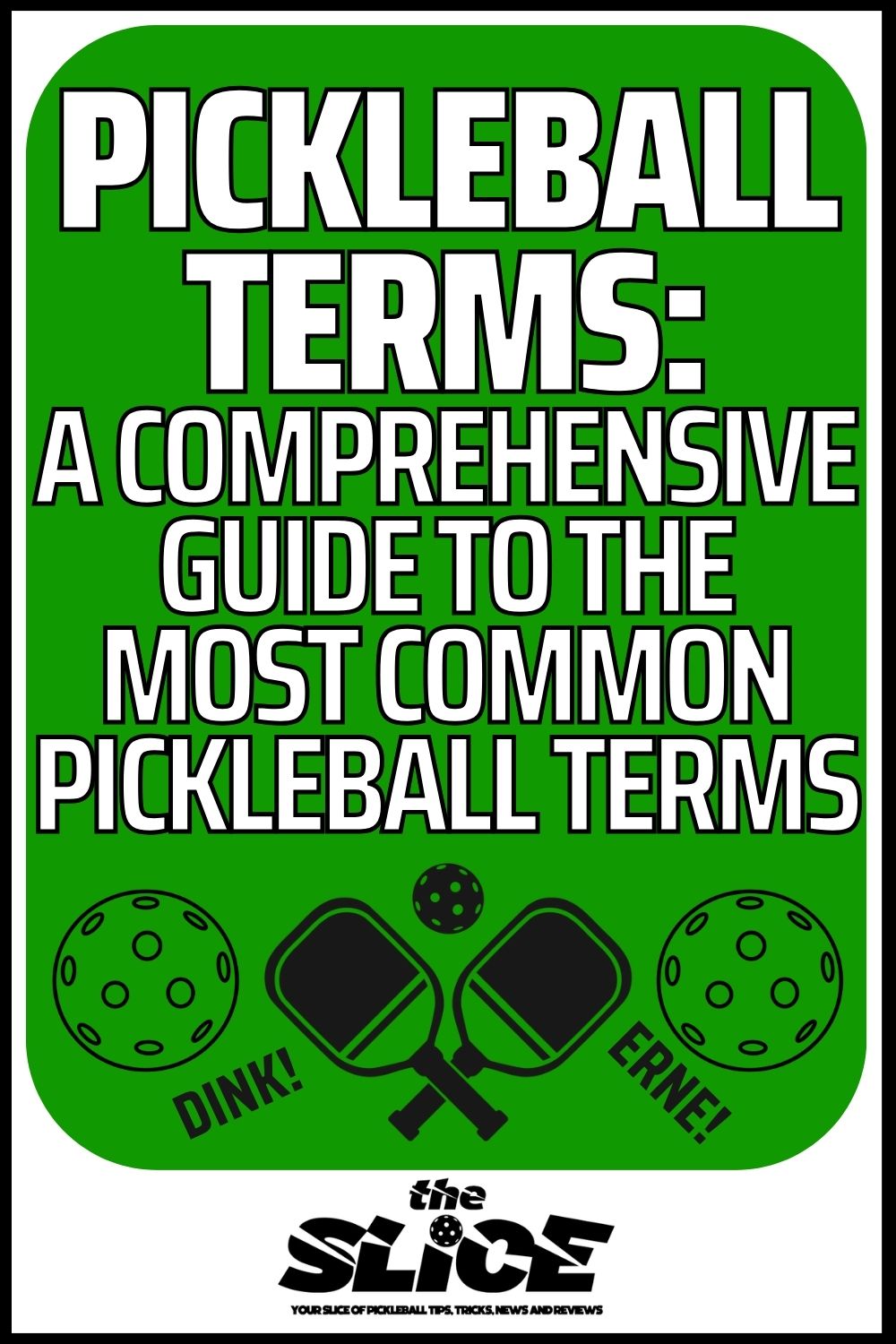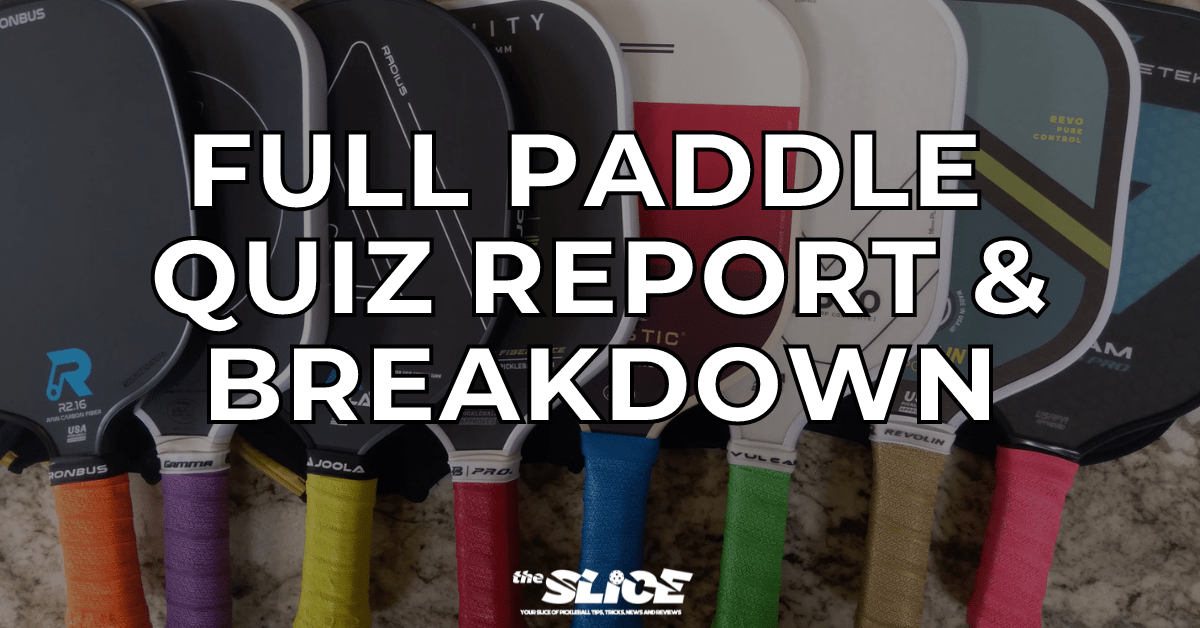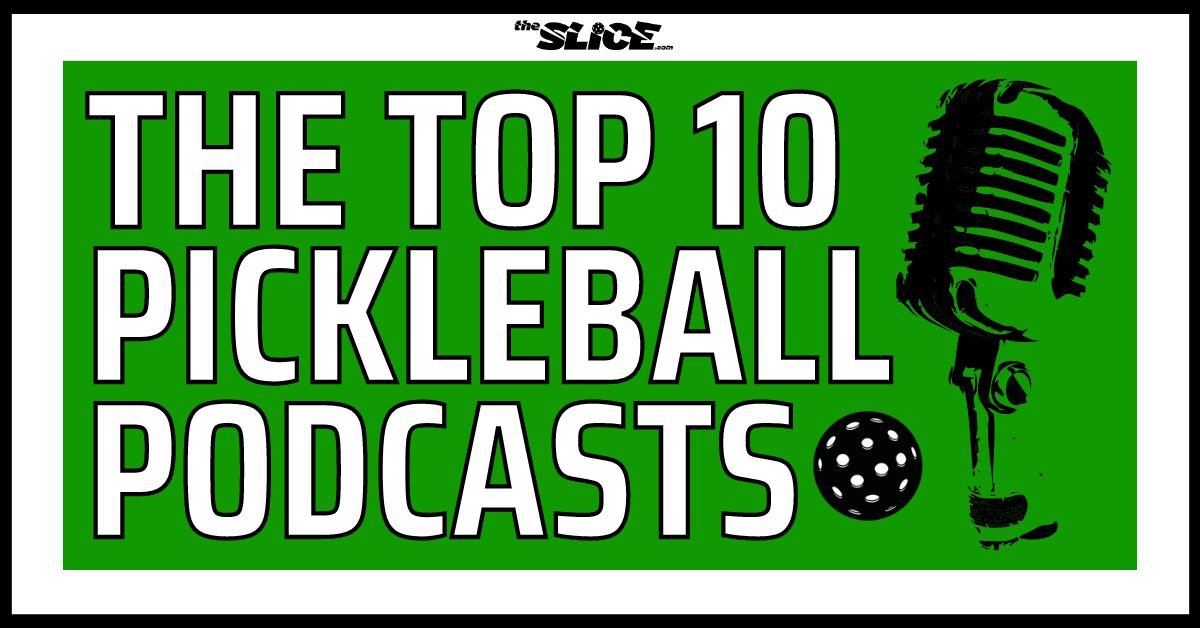
Welcome to the ultimate guide on mastering the language of pickleball! Whether you're a seasoned player or a beginner picking up a paddle for the first time, understanding the key terms used in this popular sport is essential to improve your skills and communication on the court.
In this comprehensive guide, we will dive into the various pickleball terms you need to know to excel in the game. From basic terms like "dink" and "volley" to more advanced terminology such as "third shot drop" and "stacking," we will cover it all.
If you're new to pickleball and also want to learn more about the game overall, I also have a bunch of other resources you can utilize on the site:
- Pickleball Scoring: The Ultimate Guide to Keeping Score in Pickleball
- Pickleball Kitchen Rules: The Rules of Pickleball's Non-Volley Zone
- Pickleball Serving Rules: How To Master Your Pickleball Serve
- The Top Ten Pickleball Paddles for Beginners
- The Top Ten Pickleball Paddles for Under $100
- Full Pickleball Paddle Reviews Database
- Pickleball Paddle Quiz: Find The Best Paddle For You
And there is even more where that came from, but you'll just have to take a look around and keep searching through the site after you are done learning about all the pickleball terminology you'll hear out there on the court.
Understanding these terms will not only help you make sense of pickleball strategy and gameplay, but it will also allow you to communicate effectively with your doubles partner and opponents during matches.
Whether you're seeking to enhance your pickleball vocabulary or looking to familiarize yourself with the sport's jargon, this guide is your go-to resource for all things pickleball terminology. So, let's get started and master the language of pickleball together!
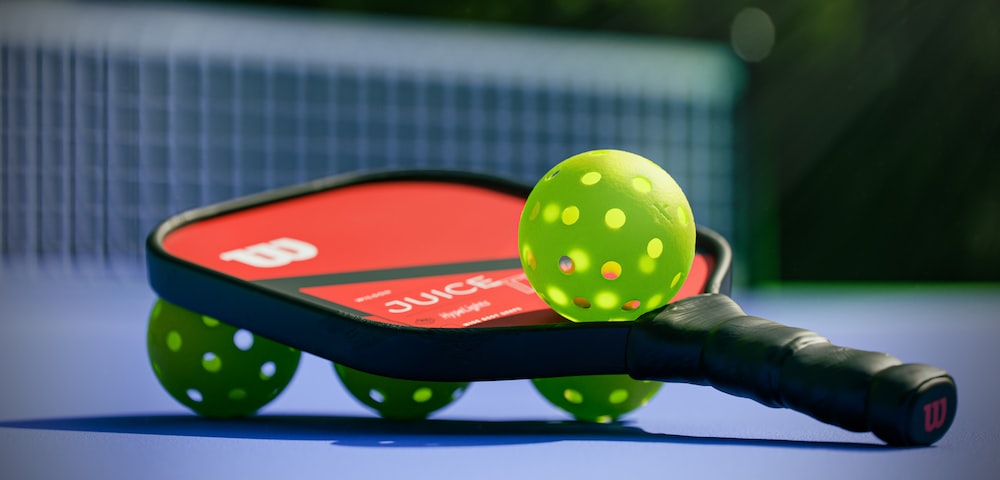
Basic Pickleball Terms for Beginners
Pickleball may seem like a simple game, but it has its own unique vocabulary. Let's start with some basic terms that every beginner should know.
- Dink: A dink is a soft shot that is hit just over the net and lands in the non-volley zone.
- Volley: A volley is a shot that is hit in the air before it bounces. In pickleball, volleys are only allowed if you are standing outside the non-volley zone.
- Fault: A rule violation.
- Reset (Or Resetting): A tactic for slowing down the point and stopping a fast rally to bring the ball back into the kitchen and look to get an advantage later in the point. This is a soft shot that lands in your opponents kitchen, where you could have normally hit it hard back at them during a quick volley.
- Third Shot Drop: The third shot drop is a strategic shot that is used in the beginning of a rally. It is an underhand shot that is meant to land softly in the non-volley zone, forcing your opponents to hit up and giving you an opportunity to move closer to the net.
- The Kitchen: The kitchen, also known as the non-volley zone, is a 7-foot area on either side of the net where players are not allowed to volley the ball. Staying out of the kitchen is crucial to avoid committing a fault. (You should also know the "Non-Volley Zone")
- Transition Zone: The area on the court between the kitchen and the baseline. (Sometimes also referred to as "No-Man's Land", I discuss this a lot in my guide on The Top Five Tips To Go From 3.0 To 4.0+)
These are just a few examples of basic pickleball terms that every beginner should know. As you continue to play and learn, you will come across many more terms that will help you improve your game.
Advanced Pickleball Terms for Intermediate Players
Once you have mastered the basic terms, it's time to move on to more advanced terminology. These terms are often used by more experienced players and can help elevate your game to the next level.
- Stacking: Stacking is a doubles strategy where one player stands behind the other to allow each player to end up on their own specific side that is build into their strategy. For example, instead of playing both the right and left side throughout a game, you will see professional players "stack" in order to continuously play one side (a left side player, and a right side player).
- Erne: An Erne is a shot where a player jumps over the non-volley zone to hit the ball out of the air (usually landing off to the side of the court). This shot is often used to surprise opponents and create angles that are difficult to defend.
- Bert: A Bert is similar to an Erne, but it is when the player jumps over the non-volley zone in front of their teammate, on the opposite side of the court!
- ATP or "Around The Post": This shot is a legal play and happens when the ball is hit on enough of an angle for the player to hit it around the post and into the court on the opposing teams side.
- Split Step: Many players know this from tennis, but this is when a player uses a small jump with both feet that helps reset your feet, regain balance, and be ready for the incoming shot. This is usually done just before the ball is hit by the opposing team to ensure you are in a ready position.
- Dig: A dig, which you'll likely hear someone say "Nice dig!", refers to a defensive shot that a player hits when the ball is attacked and shot low at the feet but the player is still able to "dig" it out from the ground in a low stance, keeping the point going.
- Pickled: The term pickled refers to a game that ended with one team not being able to score any points. That team would in this case have gotten "Pickled".
By familiarizing yourself with these advanced terms (and some fun ones), you will be able to understand and execute more complex strategies on the pickleball court.
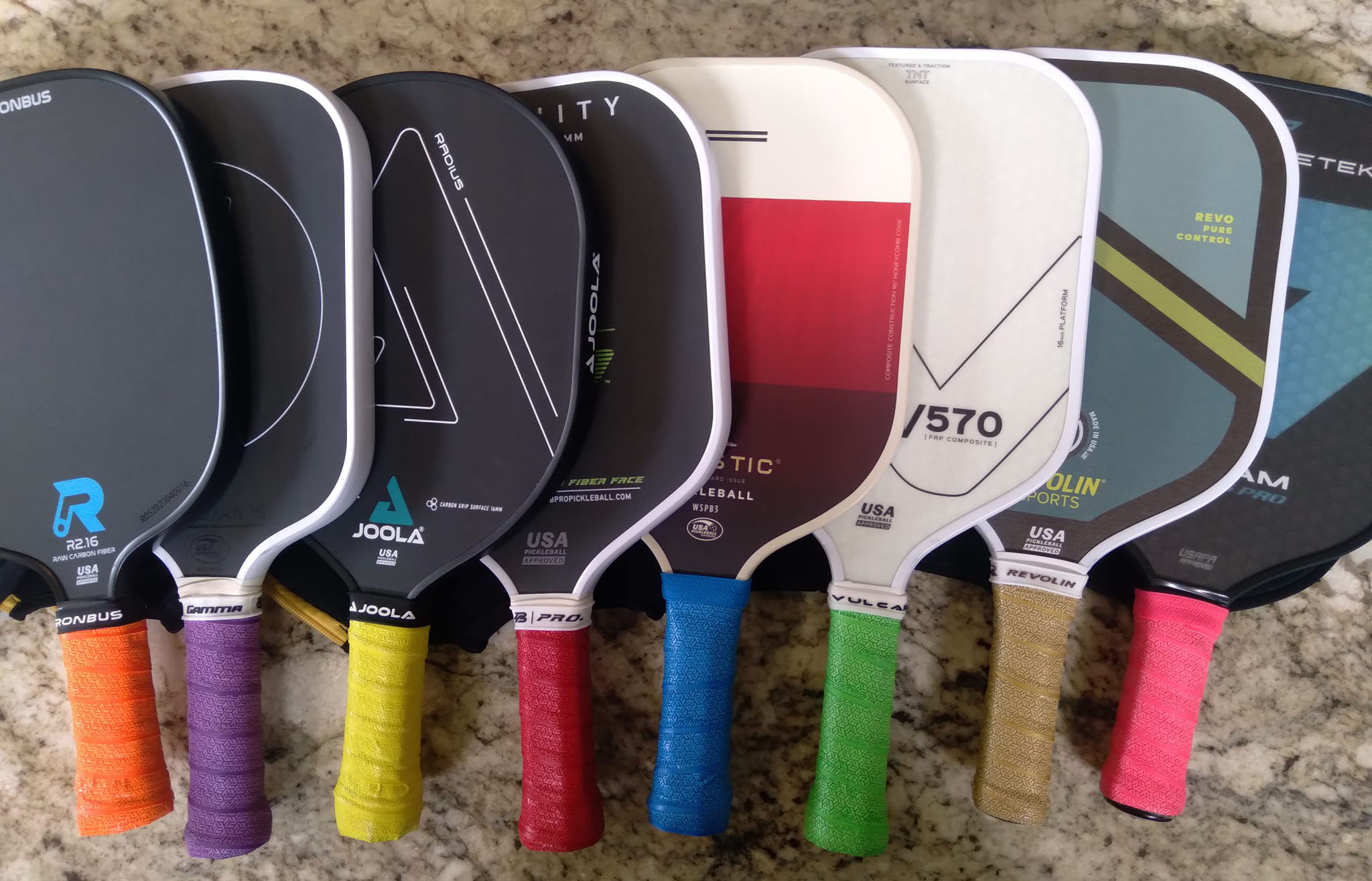
Pickleball Equipment and Gear Terminology
In addition to understanding the gameplay and strategies, it's important to familiarize yourself with the equipment and gear used in pickleball. Here are some key terms related to pickleball equipment:
- Paddle: You should probably know what a paddle is already, but I'm adding it to this list to confirm: it is a paddle, not a raquet.
- Overgrip: Overgrip is grip that is added on top of your existing pickleball grip, on the handle. It is generally used for added comfort, but some players prefer a specific grip they are familiar with, choose the best one for sweat, or even just immediately throw one on the preserve the original grip. I have made a list of the top five pickleball overgrips if you're considering using some on your paddle.
- Lead Tape: Lead tape is what players use to increase the weight of their paddle. Some players do this for balance, and other players do it for power (or both). The placement of the lead tape around the head of your paddle will determine the benefits.
- Edge Guard: Paddles are either edgeless or have an edge guard on them already, but a lot of players choose to preserve either outside layer with another layer called an edge guard, generally edge tape or edge guard tape.
- Court Shoes: Court shoes are specific to sports like basketball, tennis and pickleball, and are made for the movements that you will be doing while playing. It's important to choose the right court shoe for you (check out my article on the best pickleball shoes) to prevent injury and make your overall play more enjoyable.
By understanding the different equipment and gear terminology, you can make informed decisions when choosing your own equipment and understand the advantages and disadvantages of different options.
Pickleball Court and Scoring Terms
To fully understand the language of pickleball, it's essential to familiarize yourself with the court and scoring terms.
These are likely fairly basic for most of you, but it does help to cover them if we want to make sure to cover all the bases. Feel free to skip ahead if you already know them.
Here are some key terms related to pickleball court and scoring:
- Baseline: The baseline is the back boundary line of the court. It is where players serve from and where the ball must land to be considered in play.
- Sideline: The sideline is the side boundary line of the court. The ball must land within the sidelines to be considered in play.
- Fault: A fault occurs when a player makes an error during the serve, such as hitting the net or landing the ball outside the proper boundaries. A fault results in a loss of serve or point.
- Side Out: "Side Out" refers to the serving team losing their serve. This happens when the second server loses a point, which results in a "side out" and the other team beginning their serving. You can read more about the serving rules in pickleball to get a full breakdown.
- Let: A let is a serve that hits the net and lands in the proper service area. In most rec play, players will count that as a good serve and continue play, but pro play has begun re-doing ley serves.
Understanding these court and scoring terms will help you navigate the pickleball court with confidence and clarity.
Pickleball Terms Recap: Embracing The Language of Pickleball
Congratulations! You have now mastered the language of pickleball. Understanding the common terms used in this sport will not only improve your communication on the court but also enhance your overall gameplay.
Remember to continue practicing (and yes, I mean drilling as well - I recently discussed how important it is to drill in pickleball), watching matches, and engaging with the pickleball community to deepen your knowledge and refine your skills. Embrace the language of pickleball and enjoy the camaraderie and excitement that this popular sport offers.
So, grab your paddle, step onto the court, and let the language of pickleball guide you to victory!
Oh, and if we forgot any terms that need to be added please let me know in the comment section below 🙂
